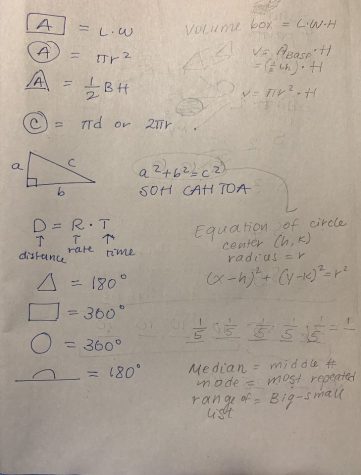ACT Tips and Tricks
I’m not going to sugarcoat it: the ACT is not fun, nor is it easy. However, for kids with the ambition of going to college, an ACT score can be one of the most important parts of their college or scholarship applications. I have taken the test four times—the first three times by myself and the last time (and best time) after being prepared by a tutor—and have picked up some important tips and tricks along the way. For those of you taking the December ACT, take note.
English
For this section, you absolutely need to know your grammar rules. I suggest asking Mr. Margadonna for his “Grading Categories” document and/or Googling “grammar rules I need to know for the ACT.” Some big concepts to know are the “however effect,” when commas are needed or not needed in sentences and when to use semicolons as opposed to colons (and vice versa). On the actual test, if you have a gut feeling about which answer choice sounds correct, go with it. You’re probably right. In this section you have 75 questions to answer in 45 minutes, which may seem like insufficient time, but these questions usually take seconds to answer, so don’t freak out.
Math
First off, make sure you remember your calculator! It’s a huge time saver, which is big when you have 60 minutes to answer 60 questions. Also, even if you don’t know the exact method for solving a problem, you can sometimes figure out how to plug an answer into your calculator and see if it seems to fit the problem. The answers are always written from lowest to highest, so when you plug in answers, always start with “C.” If “C” isn’t correct, then you can cross off two more incorrect answers if you know that the answer needs to be either lower or higher than “C.” Some other basics to know for this section are the formulas in the picture to the right.

My tutor showed me an unconventional but rewarding strategy for this section which might help you: first, before you start answering, go through the section and circle “quick and easy problems.” These are problems that you are positive you know how to do, and they can be done relatively quickly. Finish those problems and then go through the section again, circling “easy” problems. These are problems you know you can answer correctly, but they take more time. I would advise you don’t even look at the last ten questions on the test while making these categories. My tutor also told me that if there is a series of three questions on one chart of information, look at the third question, and if you don’t understand it right away, skip it. After the easy problems are completed, go through the rest of your questions, making sure to skip questions that you don’t know or would take way too much time to be worth it.
Reading
My tutor described the first passage in the reading section as a time-sucker. You would think it would be the easiest to understand, as it is always a “prose fiction” passage instead of a “social science,” “humanities” or “natural science” passage. However, with fiction you have to interpret thoughts and actions way more often than in the dull yet straightforward passages, so for time’s sake, I skipped the first passage and attacked my reading section starting at passage two and finishing with passage one.
The biggest thing I would tell anyone looking for help on the reading section is to read the questions before you read the actual passage so you know what to look for. A ton of the questions tend to be “line 45 states that” type questions anyway, so focus on those parts of the readings while skimming over less important material.
Science
Do not read any paragraphs word for word! I repeat: do not read any paragraphs word for word. For science, the best way to tackle questions are to first read the questions, then get your bearing on the graphs and locate where the information you need to answer is on a graph. Most of the time you don’t even need to read the paragraphs, and if you do need to, it’s usually for the last question, which brings me to my next point.
The science questions in each separate section of questions progressively get harder, so my tutor told me to skip the last question of each passage to allow time to finish the whole test with as many correct answers as possible. Then, if you have time at the end, go back and finish the ones you left blank.
Other Easy Fixes

Alyssa Buchheit is a senior here at St. Dominic. She is involved in soccer, book club, National Honor Society, ambassadors and many other clubs. Outside...








